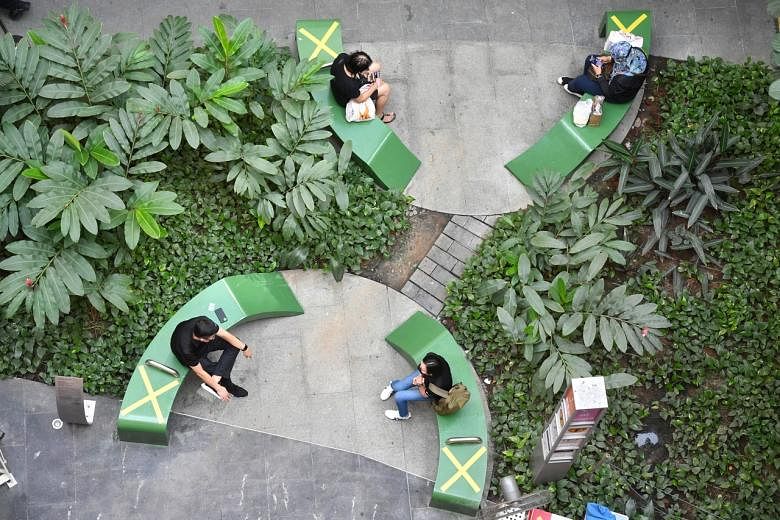SINGAPORE - The higher numbers of unlinked Covid-19 cases recently may not be a cause for concern, as they reflect a slower identification of links between cases, rather than widespread transmission, said experts.
There were 29 unlinked cases out of the 130 new locally transmitted Covid-19 cases on Friday (July 23). This comes after 52 unlinked cases were reported out of 162 new cases on Thursday - the highest number of unlinked cases in a single day so far.
There were 30 unlinked cases initially reported out of the 179 new cases on Wednesday. But these 30 unlinked cases had fallen to nine on Thursday evening, according to the Ministry of Health's nightly virus update.
Overall, the seven-day moving average of unlinked community cases increased from 7.9 on Wednesday to 14.7 on Thursday.
Professor Teo Yik Ying, dean of the National University of Singapore's Saw Swee Hock School of Public Health, said that as the number of cases increases, the ability to complete contact tracing before each case is reported to the public is reduced.
"(Thus) we will naturally see more unlinked cases reported initially, which subsequently will be successfully identified (as stemming) from presently known clusters," he said.
Meanwhile, the slower identification of links itself is not a cause of concern, as those cases have already been detected and isolated, said Prof Teo, adding that linking the cases is therefore more for monitoring the situation in the community.
Agreeing, Prof Hsu Li Yang, vice-dean of global health at the same school, noted that when there is greater spread of Covid-19 in the community, the actual number of true unlinked cases will also increase.
Prof Teo added, however, that if there is a high number of cases who are linked and detected through surveillance testing but were not isolated or quarantined previously, it would mean that the infected individuals could potentially have seeded new chains of transmission.
There were 50 such cases on Thursday and 37 on Friday - a downward trend from the 105 cases detected on Monday.
Prof Teo also pointed out that an unintended consequence of having more of the population vaccinated is the emergence of more unlinked cases. This is because a vaccinated person who is infected is likely to be silently transmitting the virus with mild or no symptoms at all.
Therefore, he expects unlinked cases to rise proportionately as Singapore continues to vaccinate its population.
More than 70 per cent of the population have received one dose of Covid-19 vaccine, while around 50 per cent have been fully vaccinated.
If more of the reported cases are unvaccinated, or the number of infected people requiring hospital care starts to increase, then it would be more of a concern to public health, said Prof Teo.
In the last 14 days, there were a total of 243 cases across all age groups who were unvaccinated. Out of these, 26 were aged 11 and below, 28 were seniors aged 60 and above.
Of the 130 reported cases on Friday, two were seniors aged 70 and above and had been unvaccinated or partially vaccinated, putting them at risk of severe illness.
At this point, however, it is less important to establish links within the community than to slow down the spread of the virus to manageable levels - until a large proportion of the population has been vaccinated, said Prof Hsu.
This explains why the multi-ministry task force tackling Covid-19 has decided to revert to phase two (heightened alert) to slow down the transmission of the virus in view of the fairly large number of unvaccinated elderly, he noted.
Prof Teo said he expects that when Singapore is ready to embark on its endemic Covid-19 plan, public health interventions will be relaxed in phases, of which contact tracing will be one that may be modified or even ceased completely in the later stage.
"Like in cases of influenza, we do not really aim to identify where people are being exposed and infected, but rather whether these people subsequently go on to require hospital or more in-depth healthcare," he said.
"So I expect we may eventually stop the entire process of contact tracing, but keep up with some degree of genomic surveillance in order to identify the dominant strains of the Sars-CoV-2 virus that is circulating in Singapore."












